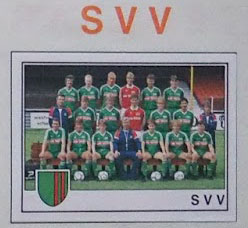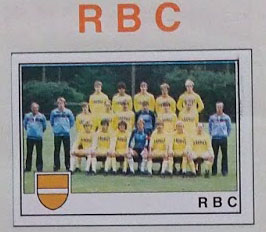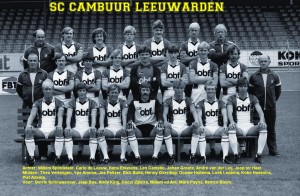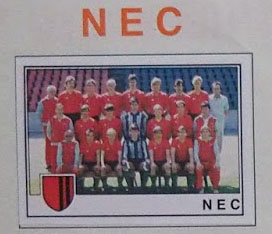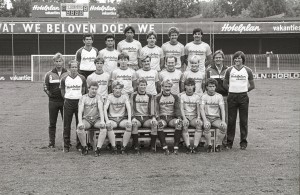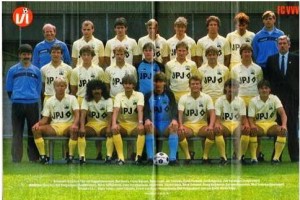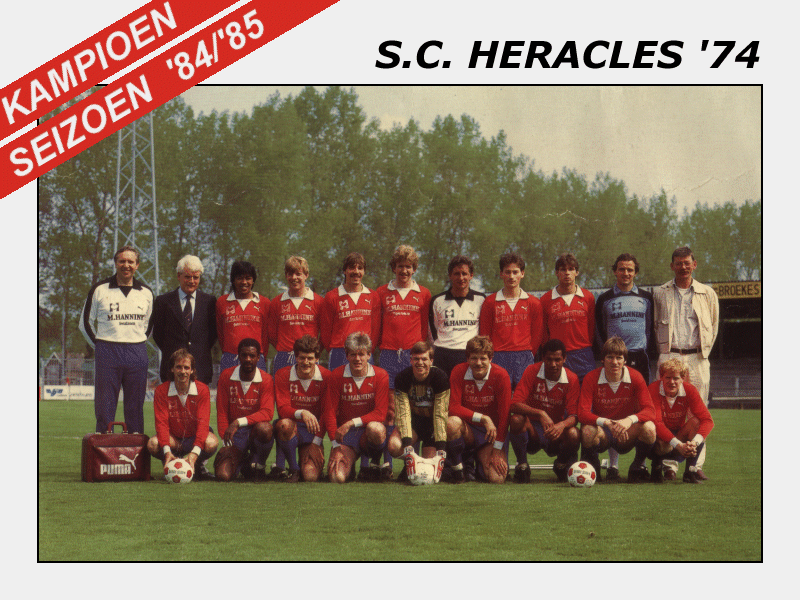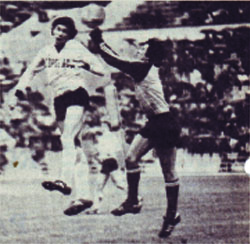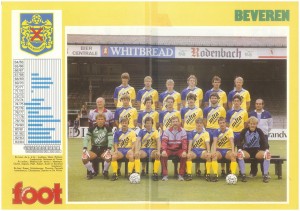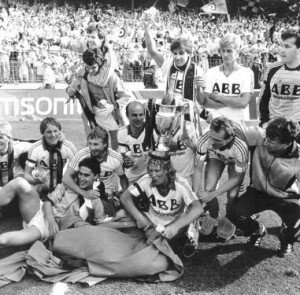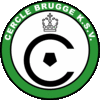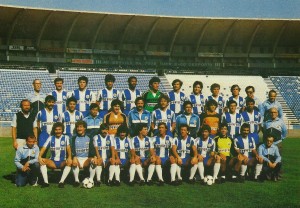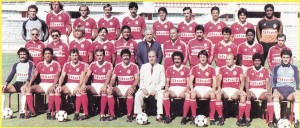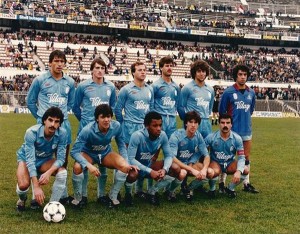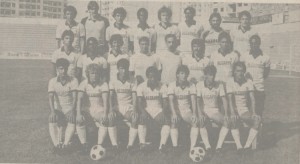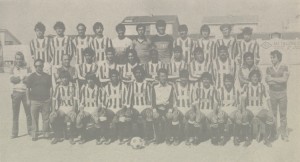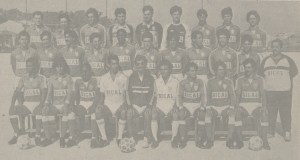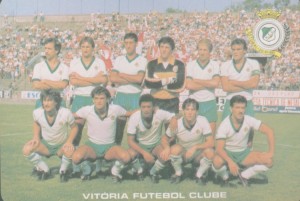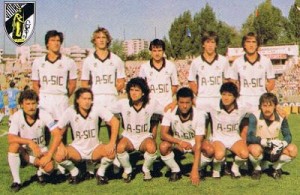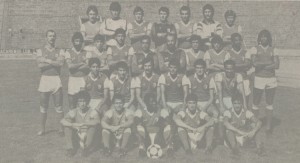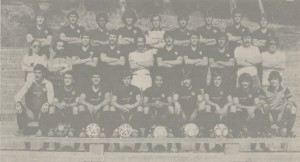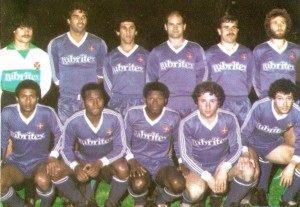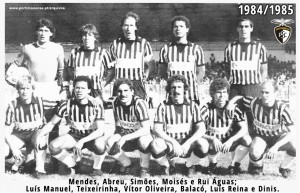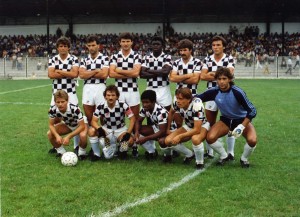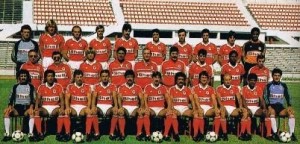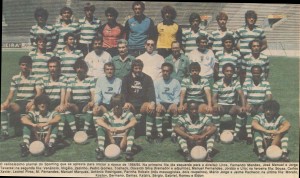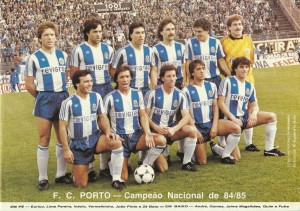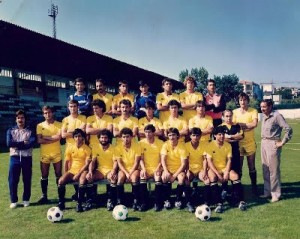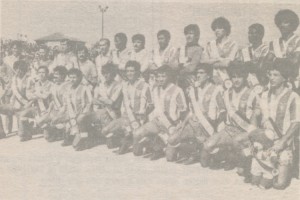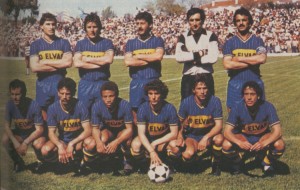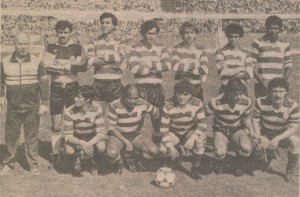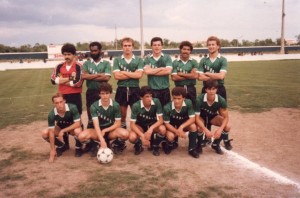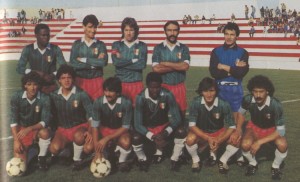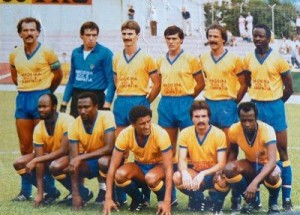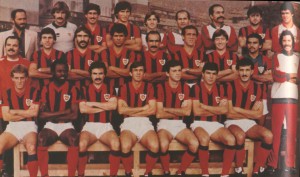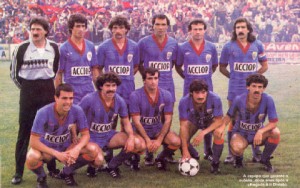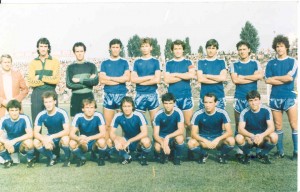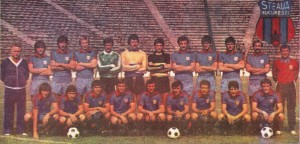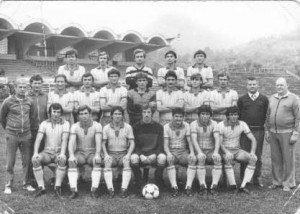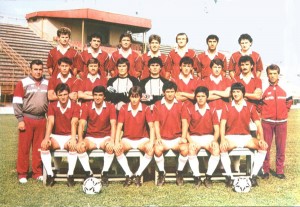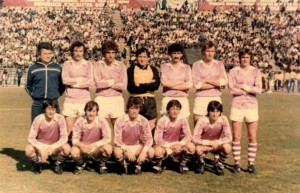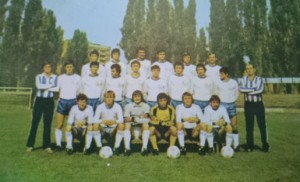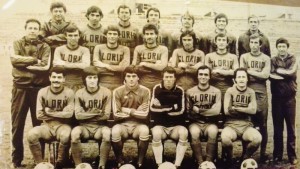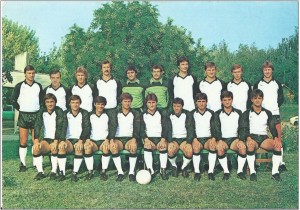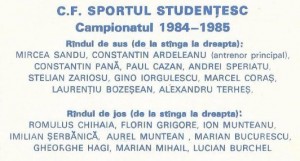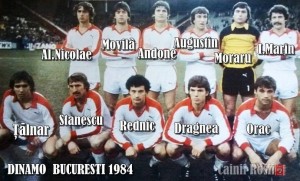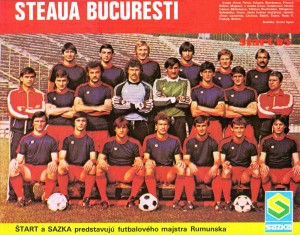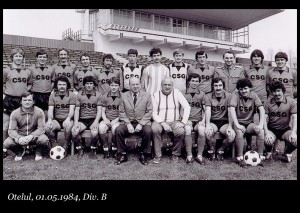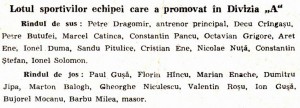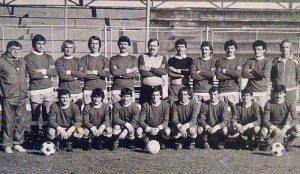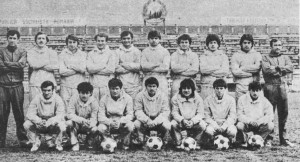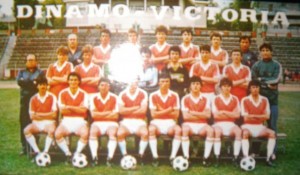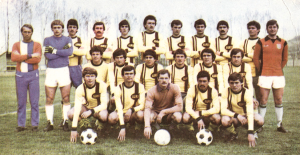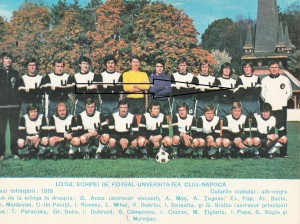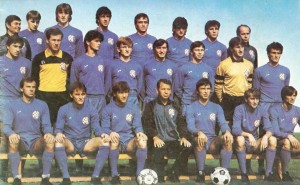Belgium. Absolute domination of Anderlecht, in a nut shell. Quite dramatic battle for the first place in Second Division between RWD Molenbeek and KRC Mechelen.

Eventualy, RWD Molenbeek prevailed, finishing with 43 points – 2 more than KRC Mechelen. Quick comeback of RWD Molenbeek, but was it a revival remained to be seen.
KRC Mechelen still had a chance for promotion – if winning the play-off tournament against the next 3 teams in the final table: FC Winterslag, 3rd with 36 points; R. Charleroi SC, 4th with 35 points; and St. Truidense VV, 5th with 34 points. Looked like an easy job for KRC, which finished way ahead of FC Winterslag – 5 points ahead – but the outcome was entirely different: KRC Mechelen was pathetic and lost all 6 games. Last of 0 points! St. Truidense VV was not much during the season and the same here: 3rd with 5 points. FC Winterslag played strong final and scored mots goals at this stage – 16 – but a tie against St. Truidense VV did them – 2nd with 9 points. R. Charleroi SC raised to the occasion – they lost the away leg to FC Winterslag, but won all other games and clinched 1st place with 10 points. And with this – promotion. Like RWD Molenbeek, Charleroi was only returning to the top league after brief exile.
First division was dominated by Anderlecht and almost everything else was quite normal – with the exception of Standard (Liege), hardly any surprises.
Racing Jet (Bruxelles) was last with 19 points. Their brief emergence from obscurity ended just as quickly. K. St.-Niklase SK was 17th with 21 points and also relegated. No surprise in that either.
Beerschot VAV – managed to avoid relegation. 16th with 24 points.
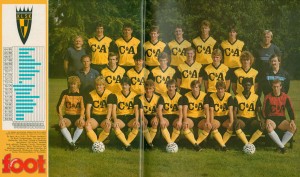
K. Lierse SK – 15th with 25 points. Given their recent years, nothing new. Hard to imagine their young goalkeeper Verlinden will become well known name in time.
RFC Seresien – or Seraing – 14th with 26 points. KV Kortrijk – 13th with 27 points.
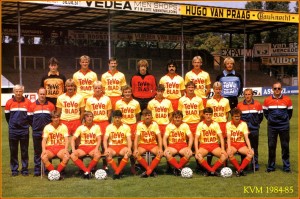
KV Mechelen – 12th with 28 points. Their aim was clear: trying to establish their place in the top division. But careful building of decent team was already started, which was something different than what most lowly clubs were doing. It was nothing much yet, but some recognizable names were already here. Top row from left: Wilfried Dommicent, Rudy Geens, Raymond Jaspers, Theo Custers, Filip Benoot, Michel Van Campenhout, Marc Huysmans.
Middle row: Jan De Cleyn, Herman Fransen, Piet den Boer, Mark Talbut, Joachim Benfeld, Koen Sanders, Mathy Billen, Wim Smets, Fi Van Hoof, Leo Canjels.
Sitting: Willi Reisinger, Benny Asselberghs, Bert Cluytens, Geert Deferm, Yvan Hoste, Karel Kesselaers, Johan Van Arwegen.
KSV Cercle Brugge – 11th with 29 points. Normal. But they had soemthing else going on. KSC Lokeren – 10th with 30 points. May be losing some ground, but Lokeren was essentially mid-table club and their good years were largely due to Polish stars. No more the likes of Lubanski and Lato, though.
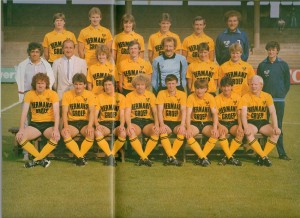
K. Waterschei SV Thor (Genk) – 9th with 32 points. Mid-table club – mid-table finish.
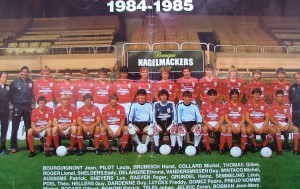
Standard (Liege) – 8th with 33 points. Quite a drop and that looked like a big surprise, given the squad at hand. But the club was still suffering the aftermath of the bribing scandal and the weakness was the result.
Royal Antwerp 7th with 39 points. Not bad, considering how distant was Standard from them, but apart from that – nothing new.
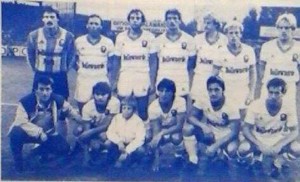
KAA Gent – 6th with 40 points. Like Antwerp, nothing special and new. Yet, not a bad season for a mid-table club.
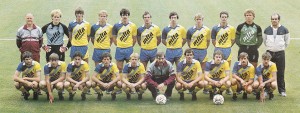
SK Beveren – the champions of the previous season were now 5th with 41 points. Not even able to compete for bronze medals, but this club should be measured differently: a small club with little money, they were brave heroes. Their golden period,which started roughly in 1975, still continued and it was amazing period for a club unable to recruit even a secondary star. The sheer guts kept them at the top of Belgian football and they even won 2 titles. 5th place was hardly a drop or sign of decline – it was just that a modest team could not do more. A lovely kit, though, and something else: they became a face for Nike. Difficult to thing of that now, but at that time Nike was only trying to get some slice of the football market. Rather unknown firm and not at all in a position to attract the interest of big clubs.
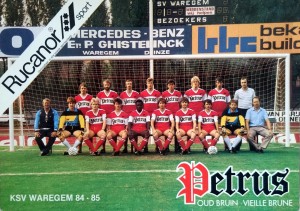

KSV Waregem – 4th with 45 points. Wonderful season for them, but it was unlikely to get better in the future. It was the typical rise of modest Belgian club – a few good local players (the Millecamps brothers, Desmet) and some sturdy foreigners (Gortz, Buckley) were enough for a good season or two. However, the best players were likely to be lost to richer clubs just as quickly, so it was imperative to enjoy the moment and not get into dreaming.
RFC Liegeois – or FC Liege – clinched 3rd place with 46 points. Like Waregem, they enjoyed their great moment. Came close to 2nd place, but 3rd was almost equally wonderful achievement. Unlikely to be repeated – at least, not soon.
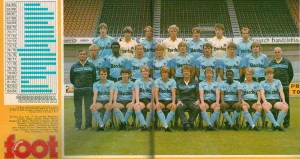
FC Brugge – 2nd with 48 points. Climbing back to leading position after the disaster of 81-82, but not yet a real title contender. Still in the rebuilding process, so, realistically, it was good season, but only a stepping stone for the future.

Goes without saying – Anderelecht was number 1. It could be argued this was their finest season, it could be argued that the opposition was quite weak and unable to offer much challenge or resistance, but Anderlecht was the single constantly stable Belgian club and no matter what the league looked like, the numbers speak of themselves: 26 wins, 7 ties, and only one lost match. They scored a round 100 goals in this championship, permitting only 25 in their net in the same time. The nearest team to them finished 11 points behind. There was no contest at all, Anderlecht was supreme and wonderful. 17 players were current, former or future national team players, representing 4 different countries. Anderlecht used to be Dutch in its earlier great version, now it was Danish – the club had uncanny ability to recruit cutting age players. It was also a club able to change its squad smoothly – Vercauteren was already getting old, an yesterday’s star, but Scifo was tomorrow’s star. There was nothing to fear from rich foreign clubs either – with such a squad, losing a player or two to Italian clubs was not a big deal: another was eager and may be even impassioned to step in. Lastly, there was the coach – the club’s legend Paul van Himst proved himself excellent not just as a player. Well, what is the point of saying more – Anderlecht is widely known. It is futile to compare squads of different times – they were great before, they were still great, still hungry for success.


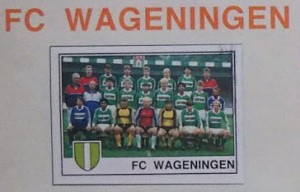
![Telstar-elftalfoto8485[1]](/wp-content/uploads/2019/12/Telstar-elftalfoto84851-300x153.jpg)


